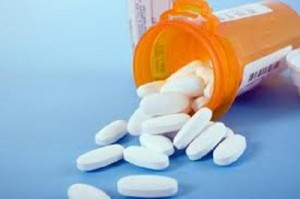QuarterWatch Reports on the FDA’s FAERS System; Recommends Changes
 The Institute for Safe Medication Practices (ISMP) has relied in recent years on The U.S. Food and Drug Administration’s Adverse Event Reporting System, also known as FAERS, to generate data for its QuarterWatch drug safety reports. FAERS is the federal government’s primary watchdog program for identifying adverse patient events from the use of therapeutic drugs.
The Institute for Safe Medication Practices (ISMP) has relied in recent years on The U.S. Food and Drug Administration’s Adverse Event Reporting System, also known as FAERS, to generate data for its QuarterWatch drug safety reports. FAERS is the federal government’s primary watchdog program for identifying adverse patient events from the use of therapeutic drugs.
The January 28th issue of QuarterWatch provides an overall critique of the Adverse Event Reporting System itself to see how it is holding up in its vital role as record keeper of “harms” from therapeutic drugs, both generic and brand name manufacturer. The main analysis focuses on all adverse event reports received by the FDA in the one-year period ending with 2014 Q1.
Although badly flawed by incomplete or low quality event reporting, as ISMP has noted in this investigative report, FAERS continues to provide valuable data in the issuance of FDA safety warnings about drugs that have received FDA approval, including drug risks that did not surface in testing prior to the drug’s release on the market. It has also been able to isolate and identify little known catastrophic or unexpected adverse side effects, both domestic and international.
The FAERS system data is generated by the voluntary reporting of adverse events by consumers and health professionals to either the FDA’s MedWatch program or directly to the drug manufacturers themselves. However, the manufacturers are only mandated to supply an FDA drug adverse event report if and when they’re made aware that one exists.
Incomplete manufacturer reports point to lack of transparency
An FDA drug adverse event report is considered “reasonably complete” if it contains both the age and sex of the patient and the date of the adverse event. Of those events reported by a consumer or a health professional as “serious”, 85% of the reports were considered reasonably complete. Only 49.4% of manufacturer’s reports of serious events could be considered complete. A study of four drug manufacturers’ event reports revealed only 15% or less rose to the level of reasonably complete while not a single manufacturer matched the FDA’s 85% standard for complete reports.
Linking drugs to serious side effects
In a reporting system like FAERS, there is an “inference of causality” or a belief that the adverse event was caused by the drug. If isolated incidents of adverse events are reported about a drug, no assumption can be made that the drug caused the event. However, if many thousands of consumers and health professionals are reporting a similar FDA drug adverse event, the assumption is that the drug is the culprit. However, according to ISMP, “For patient deaths during the study period, we estimate that in 28.5% of reported deaths, no information was provided about whether the drug was suspected of contributing to the fatality. In thousands of other cases, the reported adverse event was the patient’s underlying disease without a determination or suspicion that the drug therapy had exacerbated it”.
Serious gaps in FDA drug adverse event report
The mandate of FAERS is to identify adverse drug events among brand name manufacturers. According to the ISMP report, the three categories where reporting is weakest are adverse events in children, birth defects, and coverage of generic drugs. The study points out that the FAERS system “…works worst for patients taking older generic drugs and for events in newborns and children”. There are not enough FDA or MedWatch reports in children to draw any meaningful conclusions. For birth defects, reporting is even more limited where the percentage of reasonably complete reports was at 25.2% in 2013.
As for brand name versus generics, brand name manufacturers provide the large majority of adverse event reports even though 86% of outpatient prescriptions are for generic drugs. For example, Pfizer accounted for 66.5% of all serious FDA drug adverse event reports for the antidepressant sertraline (ZOLOFT), even though its brand name product accounted for less than 1% of Zoloft prescriptions in 2013.
Janssen accounted for 63.3% of all serious FDA drug adverse event reports for Risperidone (RISPERDAL), even though its brand name accounted for .06% of Risperdal prescriptions in 2013.
Some conclusions to be drawn from the ISMP report
It’s counterintuitive that the reporting of adverse events by a manufacturer should be so qualitatively different from the FDA’s online system. Not getting the age of a patient about whom a serious adverse event is being reported in 36% of the cases is a major flaw and an opportunity for improvement. Clear fact-generating scripts used by a manufacturer when contacting or being contacted by patients about an adverse event will also create far more accuracy in FDA reporting. Patient death reports can be improved by asking the simple question, “Was the drug suspected of contributing to the event?”
Although the FDA is investing millions of dollars in a new watchdog system called Sentinel using vast pools of insurance data, the FAERS system continues to be the critical tool for finding new and unexpected adverse effects in approved medications and helping to identify risks associated with dangerous drugs.
- Yahoo, Finance, Adverse Events Debunks Previously Accepted Limitation in the Use of FAERS Data for Monitoring Drug Safety http://finance.yahoo.com/news/adverseevents-debunks-previously-accepted-limitation-120000436.html
- National Institute of Health, Exploring the FDA Adverse Event Reporting Sysyem http://www.ncbi.nlm.nih.gov/pmc/articles/PMC4194268/


 Resources
Resources
 Resources
Resources
